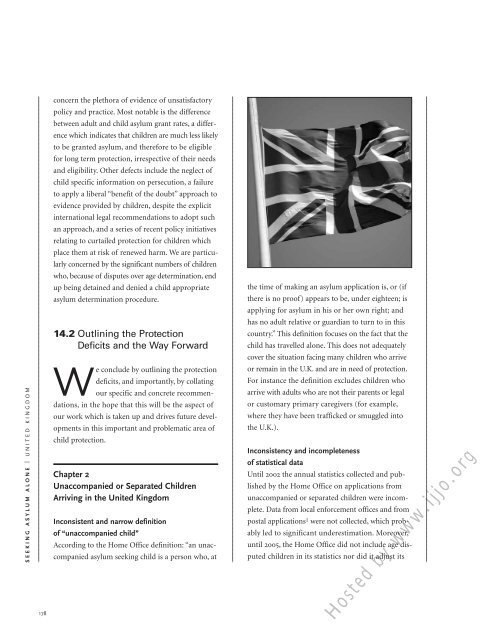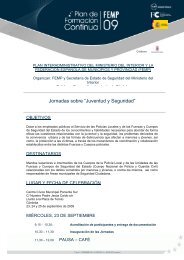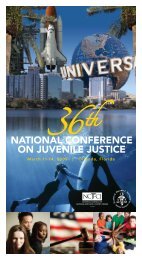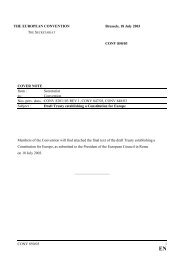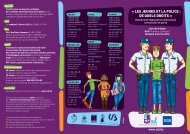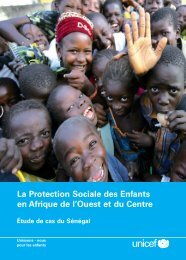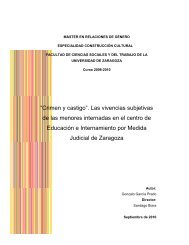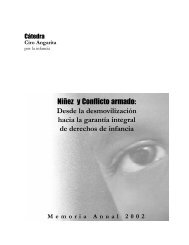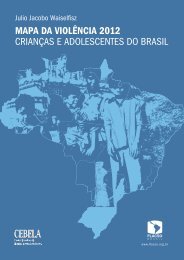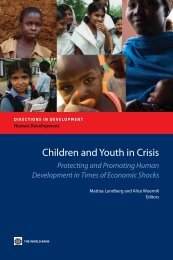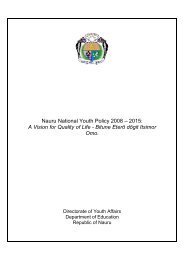Hosted by www.ijjo.org
Hosted by www.ijjo.org
Hosted by www.ijjo.org
You also want an ePaper? Increase the reach of your titles
YUMPU automatically turns print PDFs into web optimized ePapers that Google loves.
concern the plethora of evidence of unsatisfactory<br />
policy and practice. Most notable is the difference<br />
between adult and child asylum grant rates, a difference<br />
which indicates that children are much less likely<br />
to be granted asylum, and therefore to be eligible<br />
for long term protection, irrespective of their needs<br />
and eligibility. Other defects include the neglect of<br />
child specific information on persecution, a failure<br />
to apply a liberal “benefit of the doubt” approach to<br />
evidence provided <strong>by</strong> children, despite the explicit<br />
international legal recommendations to adopt such<br />
an approach, and a series of recent policy initiatives<br />
relating to curtailed protection for children which<br />
place them at risk of renewed harm. We are particularly<br />
concerned <strong>by</strong> the significant numbers of children<br />
who, because of disputes over age determination, end<br />
up being detained and denied a child appropriate<br />
the time of making an asylum application is, or (if<br />
asylum determination procedure.<br />
there is no proof) appears to be, under eighteen; is<br />
applying for asylum in his or her own right; and<br />
has no adult relative or guardian to turn to in this<br />
14.2 Outlining the Protection<br />
Deficits and the Way Forward<br />
country.” This definition focuses on the fact that the<br />
child has travelled alone. This does not adequately<br />
cover the situation facing many children who arrive<br />
SEEKING ASYLUM ALONE | UNITED KINGDOM<br />
178<br />
We conclude <strong>by</strong> outlining the protection<br />
deficits, and importantly, <strong>by</strong> collating<br />
our specific and concrete recommendations,<br />
in the hope that this will be the aspect of<br />
our work which is taken up and drives future developments<br />
in this important and problematic area of<br />
child protection.<br />
Chapter 2<br />
Unaccompanied or Separated Children<br />
Arriving in the United Kingdom<br />
Inconsistent and narrow definition<br />
of “unaccompanied child”<br />
According to the Home Office definition: “an unaccompanied<br />
asylum seeking child is a person who, at<br />
or remain in the U.K. and are in need of protection.<br />
For instance the definition excludes children who<br />
arrive with adults who are not their parents or legal<br />
or customary primary caregivers (for example,<br />
where they have been trafficked or smuggled into<br />
the U.K.).<br />
Inconsistency and incompleteness<br />
of statistical data<br />
Until 2002 the annual statistics collected and published<br />
<strong>by</strong> the Home Office on applications from<br />
unaccompanied or separated children were incomplete.<br />
Data from local enforcement offices and from<br />
postal applications 1 were not collected, which probably<br />
led to significant underestimation. Moreover,<br />
until 2005, the Home Office did not include age disputed<br />
children in its statistics nor did it adjust its<br />
<strong>Hosted</strong> <strong>by</strong> <strong>www</strong>.<strong>ijjo</strong>.<strong>org</strong>


